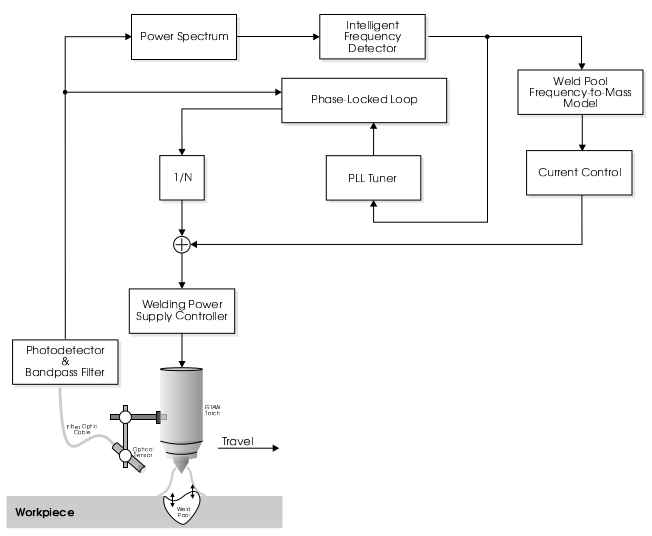About
Daniel Hartman is the founder and president of Manufacturing Behavioral Science LLC. He has over thirty years of experience researching, developing, and promoting in-process monitoring solutions for the welding and joining industry. Daniel holds a B.E., M.S., and Ph.D. in electrical and computer engineering from Vanderbilt University in Nashville, Tennessee. His clients have included Boeing, General Electric, Honeywell Aerospace, Rolls-Royce, Pratt & Whitney, The Welding Institute, KUKA Robotics, Thompson Friction Welding, The Air Force Research Laboratory, and U.S. Army DEVCOM Research Laboratory. Dr. Hartman's passion is in helping manufacturers improve productivity and increase profitability by reducing scrap and preventing flaws from becoming defects.

Background
In 1993, Daniel began his Ph.D. under the financial support of an American Welding Society Graduate Research Fellowship and the guidance of Professor George E. Cook. His work was motivated by the real-world need for reducing the frequency of weld defects in the circumferential welds of the Saturn V liquid hydrogen tanks and, more recently, in the Space Shuttle's external tanks. Daniel proposed the development of a novel, top-side, depth-of-penetration sensing and control system for semi-automated gas tungsten arc welding. At the time, this was considered a "grand challenge" within the welding and joining research and development community.
Daniel's Ph.D. extended previous research from several of his graduate student predecessors under Professor Cook's mentorship. His work included the following components:
- Model: The assessment of the depth of penetration was modeled after Rayleigh's suspended droplet analogy in which the mass, and hence the volume, of the droplet is proportional to its natural resonant frequency.
- Sensor: A non-contact, single-point, optical sensor was used to collect the specular arc light reflected off of the weld pool's mirror-like surface.
- Excitation: A software-based, phase-locked loop technique superimposed a small excitation pulse onto the welding current to ensure the weld pool vibrates at its natural resonant frequency.
- Feature Extraction: A fuzzy logic rule set was employed to extract the weld pool's natural resonant frequency from the optical signal's frequency spectrum according to Rayleigh's model.
- Closed-Loop Control: A second, self-organizing fuzzy logic rule set regulated the total heat input into the arc welding process to ensure constant depth of penetration under varying thermal regions of the workpiece.
The control system was built on top of a standard PC running Windows 95 which provided the necessary human-machine interface platform for visualizing the weld pool process dynamics. A second, real-time platform hosted the weld pool excitation, optical signal acquisition, feature extraction, and closed-loop control. The real-time tasks were performed in parallel on a multi-processor, digital signal processing backbone using Texas Instruments TMS320C40s. The two platforms were fully integrated to provide a real-time display of the weld pool oscillation dynamics and the inner workings of the control system.
Upon graduation, Dr. Hartman joined Los Alamos National Laboratory as a Technical Staff Member in MST-6's Welding & Joining Team. His responsibilities included supporting pit production under the Stockpile Stewardship program of the NNSA. Los Alamos National Laboratory was in a transitional period durng the mid 1990s. The Cold War had just ended in 1991, and Los Alamos National Laboratory, along with two other design agencies, were now tasked with serving as production agencies. During the Cold War, the nuclear weapons complex produced thousands of components each year to support the stockpile. In 1996, nuclear testing was formally ended by the Comprehensive Nuclear-Test-Ban Treaty. Without the ability to formally test new pits, the manufacturing approach at Los Alamos National Laboratory was based on recreating as closely as possible the original manufacturing streams but on a much smaller scale and with much lower production volume. Qualifying the manufacturing processes became extremely challenging with the limited material resources, aggressive schedules, and significantly smaller production volumes.
Los Alamos National Laboratory was Daniel's first exposure to a mission-critical manufacturing environment. Unlike the experience during his Ph.D., Daniel encountered a real-world production environment where the manufacturing process streams were reasonably well-characterized in terms of inputs and outputs but were otherwise treated like black boxes whose internal process dynamics were poorly understood and not monitored. The manufacturing processes were subjected to a qualification process where the machine inputs were controlled, the procedures were followed, and the end product was found to be satisfactory through statistical sampling involving inspection and destructive testing. Ultimately, a product's acceptability was predicated on inspection at each stage within the manufacturing process stream. Inspection verified the product's conformance to specifications and to statistics that quantified the consistency of the process to meeting those specifications.
Daniel was responsible for researching, developing, and promoting how monitoring the in-process dynamics can lead to significant advances in Los Alamos National Laboratory's ability to characterize and ultimately control the welding process in a small lot, mission-critical environment. While research into in-process monitoring dates back to the late 1960s, by the late 1990s there was still a large research component associated with deploying an in-process monitoring solution to a real-world production environment. Although commercial in-process monitoring solutions existed during Daniel's tenure at Los Alamos National Laboratory, many of these attempts marginalized and tarnished the reputation of in-process techniques by generating excessive false positives and thereby resulting in lost productivity, unnecessary downtime, and needless scrap. Many of the commercial systems were based on simple univariate statistics and control thresholding of the raw manufacturing data. Moreover, systems that were developed and tested in a research environment fell short in a production environment. The majority of these solutions were performed on a small scale in the laboratory under well controlled conditions. While these conditions are needed for developing and testing new methods and studying the in-process dynamics of a complex, highly non-linear, and tightly coupled welding process, these initial solutions were far from robust when transferred to a real-world environment. This was the era of overpromising and underdelivering.
InnerVoice
In 2010, Dr. Hartman founded Manufacturing Behavioral Science with one goal, to commercialize a general-purpose, stand-alone in-process monitoring solution. The result is InnerVoice, an in-process monitoring platform that has no dependency on any third-party machine tools, power supplies, robot models, or PLC platforms.
InnerVoice is the culmination of over thirty years of research and development. The software is foundationally rooted in five core competencies:
- Physics: Process understanding is the bedrock of a functioning and capable in-process monitoring solution. The process physics determines the type of sensors to use and the signal processing algorithms to apply.
- Sensors: Sensors and transducers represent the interface between the real-world process physics and the data analytics engine. Sensor selection is critical to ensuring a tractable solution.
- Signal Processing: Transforming the raw data into physically-meaningful and process-relevant features is a core necessity for capturing the process behavior and inferring product quality.
- Data Science: A combination of statistics, artificial intelligence (AI), and machine learning algorithms are employed to uncover actionable insights in the process data and to identify novel (or anomalous) process conditions.
- Data Visualization: Data visualization is an indispensable component of an in-process monitoring solution which allows the fault classification results to be quickly interpreted by the welding operator and easily disseminated to non-technical stakeholders.
InnerVoice is the world's first in-process monitoring solution based on multivariate statistical pattern recognition and supported by proven artificial intelligence (AI) and machine learning (ML) theory. InnerVoice eliminates the frustration of excessive false positives by automatically learning the manufacturer's baseline limits according to their process, workpiece geometry, material properties, and unique environment. The boundaries are therefore defined by the process itself and not by some arbitrary control limits imposed by a rigid process model or an inflexible algorithm. Advanced signal processing combined with multivariate statistics provides InnerVoice with the ability to learn complex relationships within the highly nonlinear and tightly coupled manufacturing data that would otherwise go undetected with simple thresholding using univariate statistics. The era of overpromising and underdelivering is over.
Today
Following its official release in 2015, InnerVoice is installed in manufacturing plants on three continents and has inspected millions of components. InnerVoice was designed from the ground up to be a pluggable architecture. This design approach allows for a "process-agnostic" monitoring framework where one or more plug-ins provide a customized feature set that is specifically tailored to the customer's data, process, machine interface, and reporting needs. Each installation of InnerVoice is a unique reflection of the manufacturer's process and requirements. Modular by design and configurable by the end user, InnerVoice integrates seamlessly with a manufacturing process to increase productivity and improve profitability by reducing scrap and preventing flaws from becoming defects.
InnerVoice's success is a testament to Dr. Hartman's thirty-plus years of experience and dedication to researching, developing, and promoting in-process monitoring. He has seen firsthand the shortcomings of previous products and solutions. More importantly, over the course of thirty years, Dr. Hartman has experienced numerous failures himself. InnerVoice's strengths are a direct by-product of Dr. Hartman's experiences and struggles. InnerVoice was built on failure, it was built on frustration, and it succeeded through perseverance.
Please contact us to learn more about how InnerVoice can help you achieve 100% in-process quality assurance.








